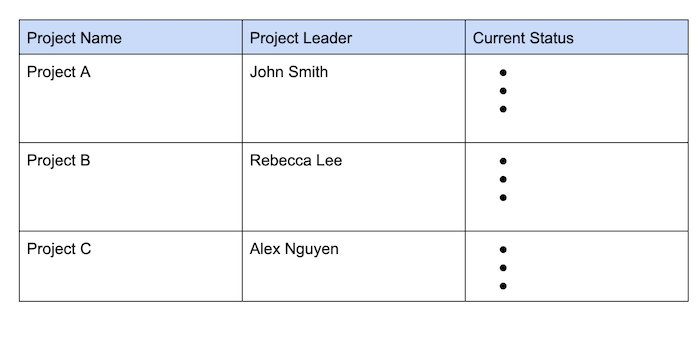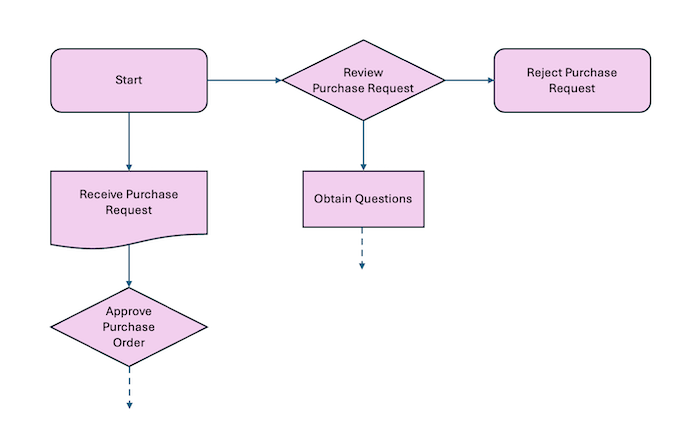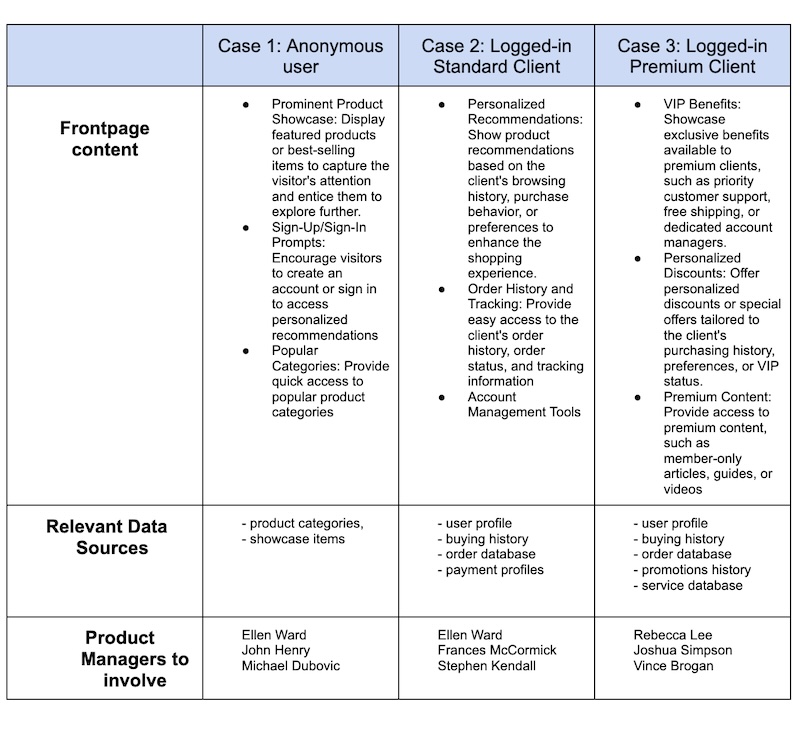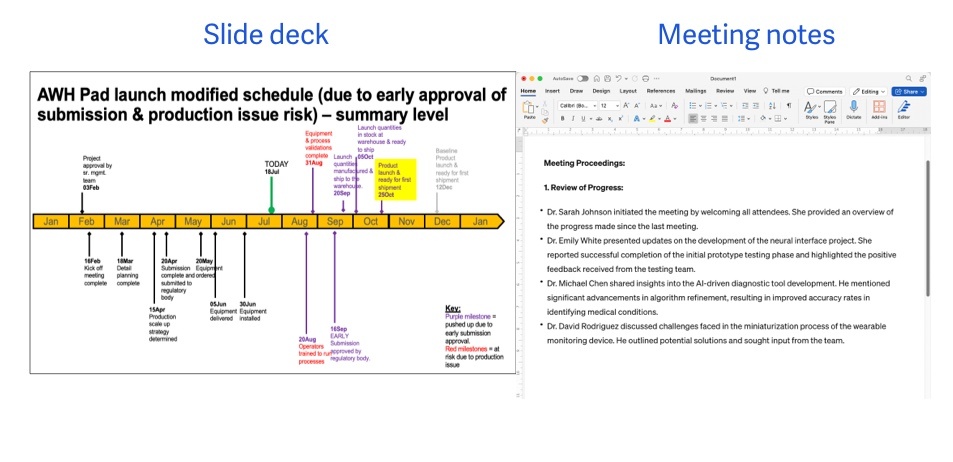Do you often find yourself in a situation where you hosted a meeting and took notes, but as you prepare the official minutes only 2 hours later, nothing seems to make sense anymore?
“We talked about so much stuff,” but:
You’re struggling to connect the dots.
You’re grappling to piece together the decisions made.
You’re desperately trying to recall all the details discussed.
The meeting is long over – the folks have left.
You stare at your screen, feeling the pressure of having to produce something that isn’t totally inaccurate and send out the minutes.
Darn!
I know this situation very well. Taking notes isn’t easy, let alone leading through the conversion at the same time.
I have gone through the journey myself.
As a college student, I often spent the summer breaks on internships. One of my main tasks involved taking minutes during meetings. Imagine 20 people sitting in a room, discussing stuff that you have no clue about. That was my situation. But hey, I was in charge of the minutes, I had to churn out something passable! So following the meeting, I went to the various participants to check if my notes were correct. Quite embarrassing. But for an intern, you are being forgiven. I would also run my notes by the group director and she would make her own adjustments. Finally, the minutes were ready to be shared.
The problem: It took me almost one week to finalize the minutes.
That’s way too late!
Who would ever bother to review my notes a whole week later?
Thank goodness I had responsible coworkers who would make their own notes and usually follow through on the agreed tasks.
So here’s the first lesson:
Your meeting notes, which outline action items, are meant to prompt the respective task owners into action. Beyond documenting the discussion, their primary purpose is to ensure people follow through on agreed tasks. Therefore, always distribute the minutes no later than one day after the meeting.
Leading a Meeting and Taking Notes: How I Do It!
Picture this:
15 faces staring at me in the conference room while another dozen folks chime in from some other location, with people from different time zones, language issues and the connection dropping every now and then.
This was the chaotic meeting reality in my days as a project manager.
Not easy!
I was in charge of leading the meetings, capturing everyone’s input so nobody got upset, and ensuring we reached a productive conclusion—all while jotting down notes.
At the beginning, I struggled. But I quickly figured out a way how I could handle both, meeting coordination and note-taking at the same time.
Today I want to share my approach with you.
1. Remember What We’re Trying to Achieve
Whenever I go into a meeting, I know exactly what I want to accomplish.
For example:
- I want to get people’s feedback on next year’s project roadmap.
- I want to capture the requirements for a particular website feature.
- I want to discuss a specific technical issue and determine concrete steps for its resolution.
- I want to map out some kind of process
Clearly defining the purpose of the meeting enables you to lead the conversation. You dig deeper into participants’ comments that relate to the meeting’s purpose, and you limit (shut down) any discussions that have nothing to do with the meeting’s core purpose.
If you are unsure about how a comment relates to the main topic, just ask:
“John, help me understand: how does the topic of material records relate to our purchasing process? What’s the connection?”
Based on the feedback you get you’ll know whether it’s worth discussing the mentioned side topic or not. Only if it’s somehow connected to the meeting topic do you have to record in your notes. Otherwise, just move on with the meeting agenda.
From what I’ve observed, many people are scared to interrupt the discussions and ask follow-up questions because they are afraid of looking dumb. But you should interrupt and ask, especially as the leader of the meeting! You need to understand what’s being discussed.
Otherwise, the meeting isn’t going to take you further and you are not able to produce meeting notes that provide any value.
Here’s the next aspect we need to look at:
2. Pick the Right Meeting Template
I’ve long abandoned the standard meeting template: A Word file with the entire discussion captured in prose format. I hate it, and it’s not effective at all.
Instead, I create a template that fits best for the topic of discussion.
Basically, I want to make note-taking as easy as filling out a form!
Suppose I wanted to get the status of ongoing projects, my notes template would look like this:

If the meeting was about mapping out a process, my notes would be a flowchart:

All you need for note-taking is a flipchart. If it’s a virtual meeting, you can use the whiteboard features of your video conferencing tool like Teams or Zoom. It works great!
Here’s a third example:
Imagine your meeting is about clarifying a particular website feature, namely the content to be shown on a web store’s front page depending on the visitor:

The point I’m trying to make:
Use a notes template that is best suited to capture the specific information of your meeting. Work out a suitable format and prepare the template ahead of time so you’re ready to take notes when the meeting starts.
This way, note-taking becomes as easy as filling in a form! And it should be easy, because we are also simultaneously leading the meeting.
Another point that I want to share with you:
3. Capture final results, not the process
A lot is being discussed in meetings, but maybe only 20% of the content has any relevance to the goal of the meeting. The rest is simply people sharing thoughts and refining ideas, or people talking because they enjoy talking 😀
What does that mean for you?
You don’t need to record every sentence that was said or every idea that was shared. You only need to document the final result of the meeting:
Example – BAD:
Agenda Item: Button Color Discussion
- Tom advocated for a bold red button, emphasizing its ability to convey urgency and prompt action from customers.
- Sarah disagreed with Tom’s suggestion, arguing in favor of a calming blue button. She highlighted the trust-building and tranquil nature of blue.
- Dave proposed a green button, citing its universal association with success and the ease of visual perception. He argued that it would be both effective and easy on the eyes.
- blah blah blah
- …
- Result: The group voted in favor of Dave’s suggestion, and the buy button should be in green color.
We can take the same meeting and distill the minutes down to this:
Example – GOOD:
Agenda Item: Button Color Discussion
- Result: The group decided to have a green buy button.
Now, this might be a bit of an extreme case, but you get the point: The crucial bits are the outcomes and decisions forged in the meeting. Those are the nuggets you want to capture in your notes. Skip the drawn-out discussions—they’re just noise in the grand scheme of things.
That leaves us with the final question:
How To Get Your Meeting Notes Right Every Time
Above all, carefully follow the meeting discussion and make sure you understand everything that’s being talked about. Don’t hesitate and interrupt if something isn’t crystal clear. You cannot produce accurate notes if you don’t fully grasp what was discussed..
Now, here’s how I check my notes for accuracy:
Approach 1: Take notes live while sharing your screen (my favorite approach)
For most meetings, especially those with smaller groups, I will write the minutes on the go while people are watching my screen. This works great both for physical and virtual meetings. If I’m sharing a presentation, I will switch between the slides and my notes. As i create the notes, people can see what I’m writing and in case of points I’m unsure about, I will ask if I have recorded the point correctly.

Approach 2: Verify notes at the end of the meeting
For bigger meetings, for example workshops where someone else is presenting, I will note down the key points on my computer. Towards the end of the meeting, I will share my screen and we will go through my draft notes. We will quickly go through the notes point by point, and I will again ask the attendees for feedback. Is there anything I missed? Or did I record any points incorrectly? I will get immediate feedback and am able to correct my notes right away.
The great thing about approach 1+2 is I am able to finalize and share the notes within 1-2 hours after the meeting. With that task checked off my list, I can shift my focus to other priorities.
This approach also benefits meeting participants, as they receive the notes while the discussion is still fresh in their minds. In my experience, people are more inclined to act promptly on tasks outlined in the meeting when they receive the notes promptly thereafter.
Approach 3: Post-meeting notes review
Sometimes, there’s just not enough time to check the notes during the meeting. In these cases, I’ll put together the notes later and share them with everyone. Then, I’ll ask for their thoughts. But remember to set a deadline:
Subject: Website Redesign Workshop
Hi Team,
Thank you for your participation in the workshop and your valuable contributions.
Attached are the meeting minutes and action items for your review. Your feedback by Feb 9th would be greatly appreciated.
Best regards
John
Then you wait for feedback, update your notes and share the final version. Done.
You’ve got this!
Taking notes and steering the discussion – you can manage both! The key takeaway? Keep in mind that as the meeting leader, you’re at the helm. Make it easy for yourself. Guide the conversation in a manner that’s easy for you to follow. Don’t hesitate to interrupt and clarify whenever needed. Also, make the note-taking process as easy as possible by using a template tailored to the specific meeting. If possible, show your notes to the attendees and seek their feedback. This way you’ll always end up with correct notes and you’ll spare yourself prolonged discussions for clarification.
Do you have a question?
Have a question about this article? Need some assistance with this topic (or anything else)? Send it in and I’ll get back to you soon.
Author
-
Hi, I’m Adrian, a Senior Project Manager and the Creator of Tactical Project Manager, where I teach a pragmatic approach to project management. Led large-scale IT and business projects for over 10 years. My goal is to enable you to lead any project with confidence.
View all posts



